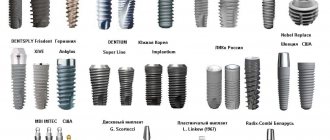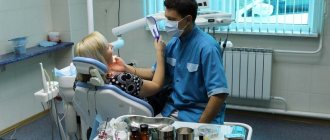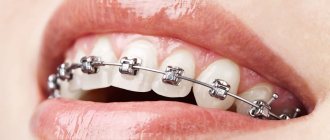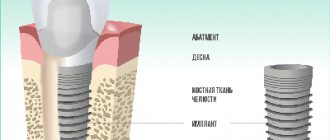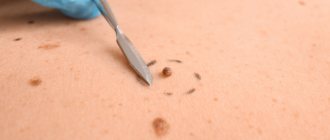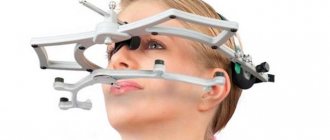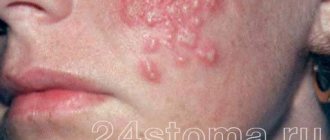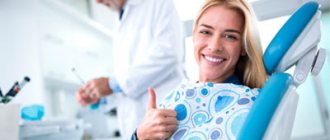Orthopedics is one of the branches of clinical medicine and surgery. Orthopedists study the mechanisms of development of deformities and dysfunctions of the musculoskeletal system. Doctors also work with the prevention, diagnosis and treatment of developmental defects, congenital pathologies, consequences of mechanical injuries or diseases that affect the bone skeleton. What do you need to know about orthopedists, how often do you need to visit a doctor, how is diagnosis and treatment done?
General characteristics of the direction
Orthopedics traditionally acts in conjunction with traumatology. Traumatology is a branch of clinical medicine that studies injuries to the musculoskeletal system (joints, ligaments, bones, tendons). An integral part of orthopedics and traumatology is prosthetics.
Content:
- General characteristics of the direction
- What are the responsibilities of a specialist?
- What you need to know about pediatric orthopedics
- When to ask for help
- Diagnostic methods and therapy
The discipline is based on the development and application of prostheses/orthoses. A prosthesis is an artificial substitute for damaged body parts of a living organism. An orthosis is an external medical device that is used to change the functional or structural characteristics of the skeleton/neuromuscular system. Orthoses include corsets, bandages, special insoles or orthopedic shoes, and support devices.
Orthopedics is also considered an important part of sports medicine. This is a science that studies changes in the human body during/after active physical activity. Both positive and negative results are assessed. Why does an orthopedist need knowledge about physical culture and sports? A practicing doctor conducts and prescribes exercise therapy, massage or physiotherapy. It is considered unacceptable to use medical procedures without full knowledge about them.
In conjunction with traumatology and orthopedics are other highly specialized areas - spine surgery, biomechanics of the musculoskeletal system, joint replacement, arthroscopic surgery and others. In some countries (for example, in the post-Soviet space), the combination of traumatology and orthopedics constitutes an independent clinical discipline.
Who is an orthopedist
An orthopedist is a doctor who studies and solves problems of the musculoskeletal system, which includes muscle tissue, joints, bones, tendons, and nerve structures. What is another name for an orthopedic doctor? Another name for this specialty is orthopedist-traumatologist (in some sources simply “traumatologist”). What is this connected with?
In order to obtain the specialty of an orthopedist, a young specialist must initially undergo basic training at a higher medical institution in the specialty of general medicine, or in the field of pediatrics, and only after graduation he has the right to choose an additional specialization. In this case we are talking about the department of “orthopedics and traumatology”. Consequently, upon completion of additional education, the doctor will have the specialty of “orthopedist-traumatologist”.
Depending on the focus of the medical institution, place of work (as a rule, the place is provided and little depends on the choice of the young specialist), the doctor can conduct professional activities primarily in one of the areas (orthopedics or traumatology), or, depending on work experience, degree competencies and orientation of honey. institutions, conduct medical activities as an orthopedist-traumatologist.
What are the responsibilities of a specialist?
An orthopedist is a specialist with a higher medical education who has completed postgraduate training (internship/residency) and received a highly specialized specialization. In addition to the traditional course of therapy for diseases and injuries of the musculoskeletal system, the specialist is oriented in military field surgery, prosthetics, sports traumatology, rehabilitation, clinical biomechanics and bone pathologies.
The main goal of the doctor is the prevention and treatment of orthopedic diseases and the consequences of mechanical injuries in an outpatient setting. Diagnostics, therapy and prevention are carried out in specialized medical institutions - hospital trauma departments, rehabilitation centers, orthopedic sanatoriums, and so on.
An incomplete list of diseases treated by an orthopedist:
- bowed feet, clubfoot or flat feet;
- congenital pathologies of the musculoskeletal system (for example, hip dysplasia);
- arthrosis, bursitis, arthritis;
- osteochondrosis (dystrophic disorder in articular cartilage);
- mechanical damage, dislocations, fractures and other injuries;
- Ewing's sarcoma (malignant tumor of the bone skeleton).
What does an orthopedist look for in newborns?
In pediatric orthopedics, preventive care is very important, so such a specialist should be visited at least 5 times in the first year of a child’s life. Most congenital orthopedic pathologies can be detected in the first weeks of a child’s life. Thanks to early detection, competent and timely treatment regimen, orthopedic problems in children, in most cases, can be successfully corrected. Moreover, the effectiveness of therapy in infancy or early childhood is many times higher, because the baby’s skeleton is plastic and pliable.
What does the specialist do at the reception?
- examines a small patient;
- identifies abnormalities (if any) and prescribes additional diagnostics if necessary (ultrasound, X-ray, CT, MRI, etc.);
- selects an effective treatment regimen and/or corrective measures;
- monitors the treatment process over time, makes adjustments if necessary;
- will recommend a set of rehabilitation measures (massage, exercise therapy, physiotherapy, etc.) for quick and effective recovery.
The specialist immediately gives an opinion and recommendations during the initial examination of the newborn.
What you need to know about pediatric orthopedics
Pediatric orthopedists are placed in a separate category. The direction itself is focused on the prevention and treatment of skeletal defects. Consultation with an orthopedist is necessary not only for schoolchildren, but also for preschool children. The doctor will diagnose the baby’s musculoskeletal system, identify its strengths/weaknesses, determine the child’s readiness for future stress (school/university) and tell parents how to avoid many ailments.
An emergency visit to a specialist is indicated in the following cases:
- incorrect position of the newborn's hip (congenital dislocation);
- heaviness of gait, rapid fatigue of the baby after several steps or minutes of walking;
- slouch;
- constant tilt of the head to the shoulder;
- the child’s own complaints of episodic pain in the legs/back/neck/arms;
- clubfoot.
Monitor your own child and analyze the pace of his development. Failure to see a doctor in a timely manner is fraught with complications, long-term therapy and a decrease in the baby’s quality of life.
Indications for visiting a traumatologist-orthopedist for orthopedic consultation
A timely consultation with an orthopedic traumatologist allows you to detect diseases at an early stage, when conservative treatment methods are effective and the risk of complications is reduced.
It is recommended to make an appointment for an orthopedic examination by a traumatologist-orthopedist for the following complaints and disorders:
- asymmetry of skin folds on the child’s buttocks and thighs;
- pain in muscles and joints;
- restrictions in movements;
- poor posture, stoop;
- flat feet, club feet;
- different lengths of limbs;
- detection of any neoplasms in the area of bones, muscles or soft tissues;
- torticollis, an unnatural position of the child's head or body
If these signs appear, you should make an appointment with an orthopedic traumatologist. The doctor will conduct an examination, prescribe an examination, and, if necessary, refer you to additional consultations with a surgeon, neurologist, osteopath or other specialized specialists. Some diseases require the participation of doctors from related disciplines.
When to ask for help
Visiting an orthopedist should become a regular procedure. Get a general medical examination 1-2 times a year to monitor your own body and prevent illnesses in time. Bone disorders can develop over years without causing much discomfort or pain to the patient. That is why frequent diagnosis is the key to the health of the musculoskeletal system.
An unscheduled consultation with an orthopedist may be needed unexpectedly. Have you or your child been injured while playing sports, are experiencing discomfort in the limbs for no apparent reason, or have simply been out in the cold a little longer than expected? Consult an orthopedist to rule out serious illnesses or treat them immediately.
Best materials of the month
- Coronaviruses: SARS-CoV-2 (COVID-19)
- Antibiotics for the prevention and treatment of COVID-19: how effective are they?
- The most common "office" diseases
- Does vodka kill coronavirus?
- How to stay alive on our roads?
Sprains, bruises, animal bites, deformation of the limbs/spine/chest/functionality of small or large joints should also prompt a person to undergo urgent diagnosis.
The main rule is that you cannot tolerate pain. Crunching in the joints, numbness or swelling of the hands, painful movement, occasional aching pain throughout the body, rapid fatigue or poor posture significantly affect the quality of human life. Protect your own comfort, do not wait for the pain to go away on its own or develop into chronic pain - visit an orthopedist.
People who engage in active sports, enjoy extreme recreation, or work in exhausting conditions (for example, in production) should visit an orthopedist more often, as they are at risk.
Specialization
Surgeons perform surgical interventions, an orthodontist restores the correct bite using braces and removable or fixed plates, a periodontist treats inflammatory processes in the gums.
An orthopedic dentist is responsible for prosthetics and dental restoration.
Important: All highly specialized doctors work together, since any restoration of the oral cavity requires an integrated approach and comprehensive treatment.
Diagnostic methods and therapy
At the first consultation, the orthopedist listens to the patient’s complaints, conducts a visual examination, determines the range of motion and prescribes the necessary examination. Most often, this is an x-ray, on the basis of which the diagnosis is confirmed or refuted. In some cases, a magnetic resonance or computed tomography scan will be required to get a clearer and better picture. In addition to diagnostic tests, the orthopedist issues a referral for a general urine and blood test.
Based on the results obtained, a therapeutic course is developed. It is selected individually for each patient. Some will need surgery, others will need a course of antibiotics or massage, and others will need lifestyle adjustments. The main thing is not to self-medicate, but strictly follow the doctor’s recommendations.
More fresh and relevant information about health on our Telegram channel. Subscribe: https://t.me/foodandhealthru
We will be grateful if you use the buttons:
Center for Traumatology and Orthopedics in St. Petersburg
Our center has all the necessary certificates and licenses to provide orthopedic services. We work as transparently as possible and fully comply with international medical standards. Our advantages:
- High professionalism. We employ doctors of the highest category, candidates and doctors of medical sciences. The average employee experience is 12 years.
- Modern equipment. The clinic is equipped with medical equipment that is successfully used all over the world. This allows us to provide the highest quality assistance.
- Accurate diagnosis. We use all available diagnostic methods to accurately determine the disease.
- Personal approach. We select the most gentle treatment method based on the characteristics of a particular patient.
- Complex work. We use expert diagnostics and laboratory tests together and draw up an algorithm for treatment and rehabilitation.
Our main rule is to help people openly and honestly, to provide attentive attention to each patient. If you require orthopedic services in St. Petersburg, call us at our contact number or make an appointment directly on the website.
